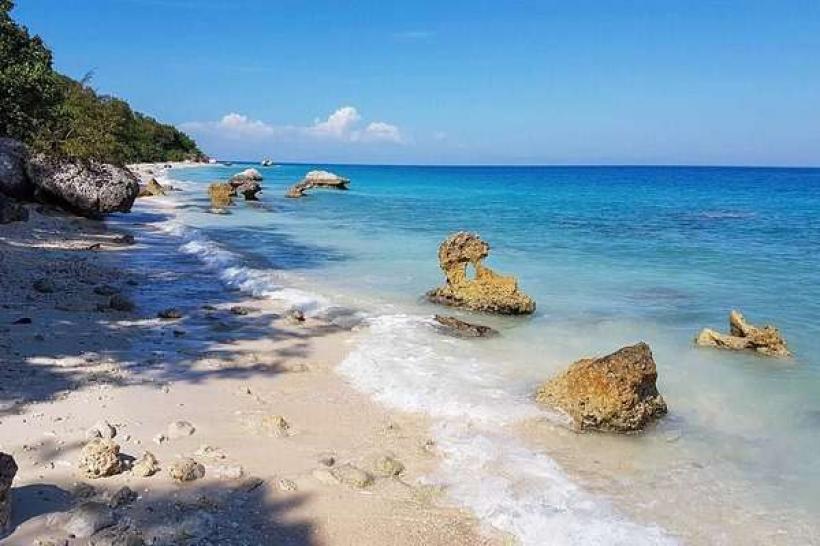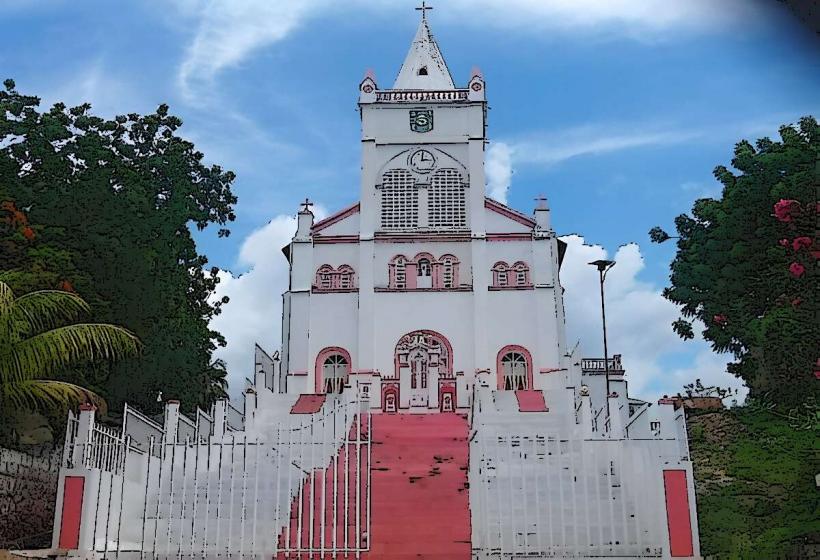Information
Landmark: Île de la GonâveCity: Les Iles Cayemites
Country: Haiti
Continent: North America
Île de la Gonâve, often referred to simply as Gonâve Island, is the largest island off the coast of Haiti. It is located to the west of the mainland in the Gulf of Gonâve and is part of the Ouest Department. Known for its stunning natural beauty, unique culture, and historical significance, the island is an important yet underexplored region of Haiti.
1. Geography and Location
- Area: Île de la Gonâve covers approximately 743 square kilometers (287 square miles), making it the largest island of Haiti.
- Topography: The island features rugged mountainous terrain, arid plains, and coastal areas with beautiful beaches.
- Proximity to the mainland: It lies about 50 kilometers (31 miles) west of Port-au-Prince, Haiti’s capital.
- Main towns:
- Anse-à-Galets: The largest town and the administrative center of the island.
- Pointe-à-Raquette: Another significant settlement on the western part of the island.
2. Historical Significance
- Indigenous History: Before the arrival of Europeans, the island was inhabited by the Taíno people, who called it Guanabo. It was a center for fishing and small-scale agriculture.
- Colonial Period:
- During the Spanish and later French colonial periods, the island served as a base for pirates and later for the slave trade.
- It was named Île de la Gonâve during the French colonial era.
- 20th Century: In 1926, the inhabitants humorously crowned an American, Faustin Wirkus, as “King of La Gonâve,” making the island briefly famous in Western media.
3. Population and Communities
- Population: Approximately 80,000 to 100,000 residents, many of whom live in small, dispersed communities.
- Language: The primary language spoken is Haitian Creole, though French is also used in official contexts.
- Economy:
- Predominantly subsistence farming and fishing.
- Some residents are involved in artisanal crafts and small-scale trade.
- Remittances from relatives abroad are a critical source of income for many families.
4. Natural Environment
Beaches and Coastline:
- Île de la Gonâve boasts pristine beaches with crystal-clear waters, making it a potential hotspot for eco-tourism.
- Popular beaches include:
- Anse-à-Galets Beach: A scenic spot near the main town.
- Pointe Sable Beach: Known for its tranquility and clear waters.
Flora and Fauna:
- The island has dry forests and unique vegetation adapted to its semi-arid climate.
- It is home to various bird species, reptiles, and marine life, including dolphins and sea turtles.
Environmental Challenges:
- Deforestation and overgrazing have led to soil erosion and reduced agricultural productivity.
- Limited access to freshwater is a significant issue for residents, particularly during dry seasons.
5. Culture and Traditions
- The island’s cultural identity reflects a blend of Taíno, African, and European influences.
- Traditional Vodou practices are integral to the spiritual life of many residents, alongside Catholicism and Protestantism.
- Festivals and ceremonies often include music, drumming, and dancing, showcasing the island’s vibrant traditions.
6. Tourism Potential
While Île de la Gonâve remains largely undeveloped for tourism, it offers tremendous potential for:
- Eco-tourism: Visitors can explore the island’s rugged landscapes, caves, and coral reefs.
- Cultural tourism: Opportunities to engage with the island’s rich traditions and local communities.
- Beach tourism: Pristine beaches provide ideal locations for relaxation and water-based activities such as snorkeling and diving.
Challenges to Tourism:
- Poor infrastructure, including limited roads, accommodations, and transportation options.
- Lack of investment in facilities and services to support tourists.
7. Infrastructure and Accessibility
- Transportation:
- The island is accessible by boat or ferry from Port-au-Prince and other coastal towns.
- A small airstrip in Anse-à-Galets allows for light aircraft landings.
- Roads: Most roads are unpaved and difficult to navigate, particularly during the rainy season.
- Utilities:
- Access to electricity and clean water is limited, with many residents relying on solar power and rainwater collection.
- Healthcare and educational facilities are sparse, and residents often travel to the mainland for services.
8. Economic Activities
- Fishing: A significant livelihood, with fish being sold locally or transported to the mainland.
- Agriculture: Limited by the island’s arid conditions, with crops such as cassava, sweet potatoes, and mangoes being the most common.
- Artisanal Crafts: Items like woven baskets, pottery, and carved wood are produced and sold locally.
9. Development Challenges
- Poverty: The island’s residents face significant economic hardship due to limited resources and opportunities.
- Access to Basic Services: Education, healthcare, and sanitation services are inadequate for the growing population.
- Environmental Degradation: Deforestation and overfishing threaten the island’s natural resources.
10. Future Prospects
- Sustainable Development: With proper investment in infrastructure, eco-tourism, and agriculture, Île de la Gonâve could become a model for sustainable development in Haiti.
- Community Involvement: Engaging local communities in planning and decision-making will be critical to preserving the island’s culture and environment.
Conclusion
Île de la Gonâve is a hidden gem of Haiti with a unique blend of natural beauty, cultural heritage, and historical significance. While it faces challenges in infrastructure and development, it holds immense potential for eco-tourism, cultural exploration, and sustainable growth. Efforts to preserve its environment and empower its communities could unlock new opportunities for the island and its people.



